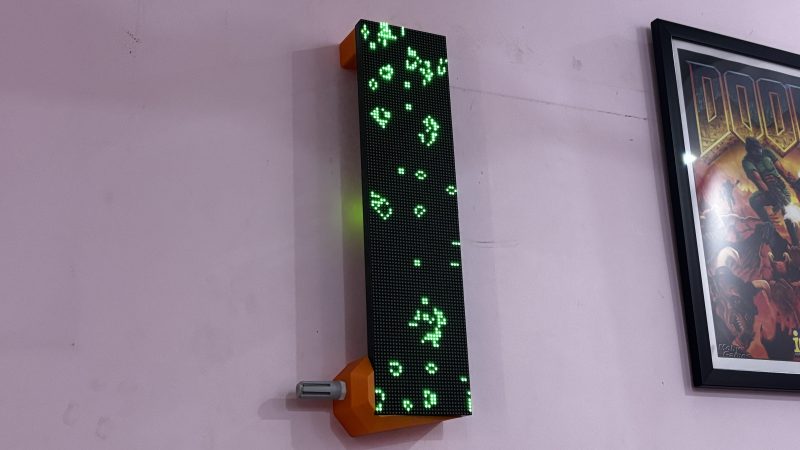The problem with air quality is that you can’t really tell how good or bad it is just by looking…unless it’s really bad, that is. It’s usually more helpful to have some kind of sensor that can tell you what the deal is. To that end, [Arnov Sharma] built a neat air quality monitor with a fun twist.
A Raspberry Pi Pico W acts as the heart of the build, armed with an SGP40 gas sensor. This sensor is intended for monitoring total volatile organic compounds in the air, which can be a useful measure of air quality in at least one dimension. It reports a simple air quality score from 0 to 500, based on a 1-1000 ppm ethanol equivalent reading. Based on the sensor’s output, the Pi Pico drives an LED matrix display — setting it green for good quality air, yellow for moderate, and red for poor air quality (i.e. high VOC content). The fun part is that rather than just show a simple color, the display plays Conway’s Game of Life to create an animated visual. We’d love it even more if poor air quality lead to the premature death of individual cells, making it even more interactive.
We’ve featured other air quality monitors before; often, it’s desirable to monitor CO2 levels to determine whether more ventilation is needed.
















Come on, what’s with the flashing? I can only assume that this looks at least passable in real life, so please bump the camera exposure time or increase the strobe frequency…
This level of attention to detail gives an impression that this was meant to be more of an ad for the PCB manufacturer than an actual project.
If you’re looking for a conversation (I assume so, otherwise why would you post a comment?) I would advise you to focus on the content of the video instead of the form.
No ozone or PM2.5 sensor? Cute, but not very useful.
Toxic measurements insufficient for the HaD comment section – sounds about right
I think it would be far more effective if the game was affected by the air quality. If the air quality is really bad all the creatures (sprites? elements?) would be flopping around at the bottom of the screen.
Conway’s Game of Life doesn’t really work that way but what the AQI sensor could do is influence the number of random spawns/deaths on the board. I’d think that higher AQI = more spawns would be a great way to make the visual work, since that’d lead to a more cluttered and chaotic board, having the pixels represent pollution rather than life.
Fits well too – since mold is part of VOCs – like a little simulation of all the bacteria.
Also the effect could be accomplished with a number of off screen glider generators :) more bacteria, more generators
Cool project!
Pollution in some cases is life, just one that found a way!